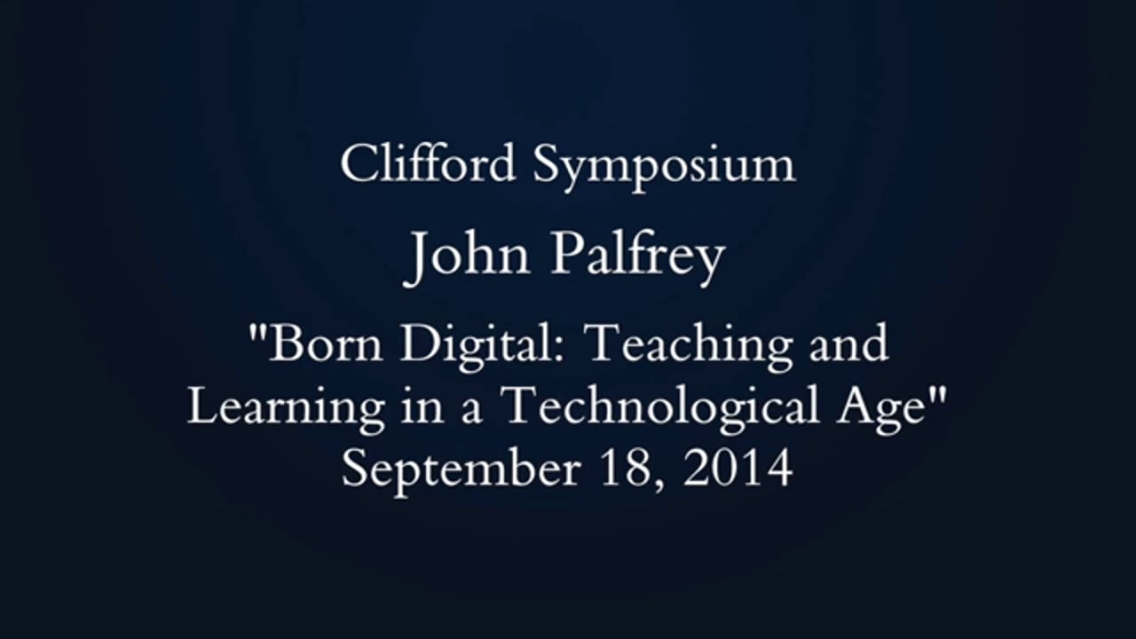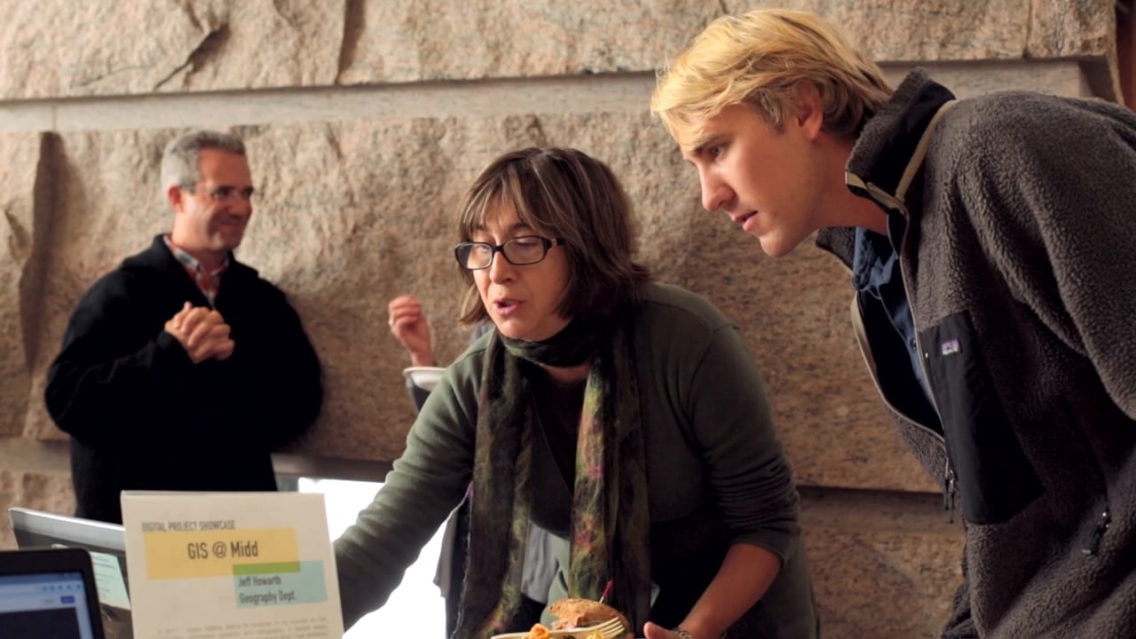Exploring Digital Teaching, Learning, and Scholarship [video]
MIDDLEBURY, Vt. - The opportunities and perils of digital technology in higher education provided a thought-provoking two days for this year’s Clifford Symposium. The annual event, this year titled “Transforming the Academy in the Digital Era,” delved into such varied topics as open source publishing and digital scholarship, privacy issues, and the arts.
In his opening keynote address, John Palfrey, the author of four books about education in the digital age and head of school at Phillips Academy in Andover, advocated for a flexible form of “blended learning.”
Palfrey said there are numerous ways to combine digital tools with face-to-face pedagogy, and “when we figure out the sweet spot in the combination of the two, we can do some really interesting work together.”
In the “self-blended” model, for example, students use remote online coursework to supplement the traditional curriculum. After taking a conventional algebra class, students would have the option to go online, watch supplemental lessons, and tackle math problems—all in an effort to master the concepts taught in class. Palfrey cited the nonprofit website Khan Academy as a prime example.
| Video: Keynote Address by John Palfrey |
“You can’t get your teacher to go over the Pythagorean Theorem 22 times,” Palfrey said, “but you can get Sal Khan to do it 22 times in a five-minute online video.” Then, after watching the online lesson as many times as necessary, students do a series of exercises associated with the video. This step, in which students use online tools to gain mastery of a subject, is of enormous importance, said Palfrey.
Palfrey, who served as the director of the Berkman Center for Internet and Society at Harvard University from 2002 to 2008, acknowledged that blended learning is more effective for subjects such as mathematics and computer science, and less so for studying history or languages.
Calling himself “shamelessly optimistic” about the future of the Internet and its role in education, he said, “I really do believe there is enormous opportunity here, but on the other side it’s not just a digital utopia.” There are dangers for higher education “in the teaching and learning zone, or in scholarship, or in libraries, and it is extremely important that we not underestimate the force of what is happening. This is a moment to be intentional about the choices we are making.”
| Video: Digital Poster Session |
Elsewhere during the symposium, students and faculty browsed through an interactive art and technology exhibit and attended panels on topics such as “new technology and scholarly communication,” “digital media and creative arts,” and “spatial research and digital methods.”
As a sample of the digital scholarship frontier, the symposium offered a “digital poster session” in which faculty members, at tables full of laptops, shared research projects fully presented online.
“Our idea was that a digital poster was a way of sharing work that is not suited to printing on a poster,” said symposium organizer Jason Mittell, professor of film and media culture and American studies.
“With a digital poster, the user has the opportunity to navigate through the material herself,” said Professor of Geography Anne Knowles, whose work on “Holocaust Geographies” was part of the poster session. “I see the digital as adding new dimensions to what we already love to do.”
Work from the digital poster session is available for viewing at http://www.middlebury.edu/clifford/2014/posters.
Named for College Professor of History Emeritus Nicholas R. Clifford, the annual symposium features interdisciplinary topics of broad interest. This year’s theme of transforming the academy in the digital age is especially timely for Middlebury, which recently launched a campus-wide digital liberal arts initiative, and in 2014 was awarded a major grant from the Andrew W. Mellon Foundation to promote digital scholarship.
With reporting by Robert Keren and Stephen Diehl; Video by Stephen Diehl and Benjamin Savard ’14.



